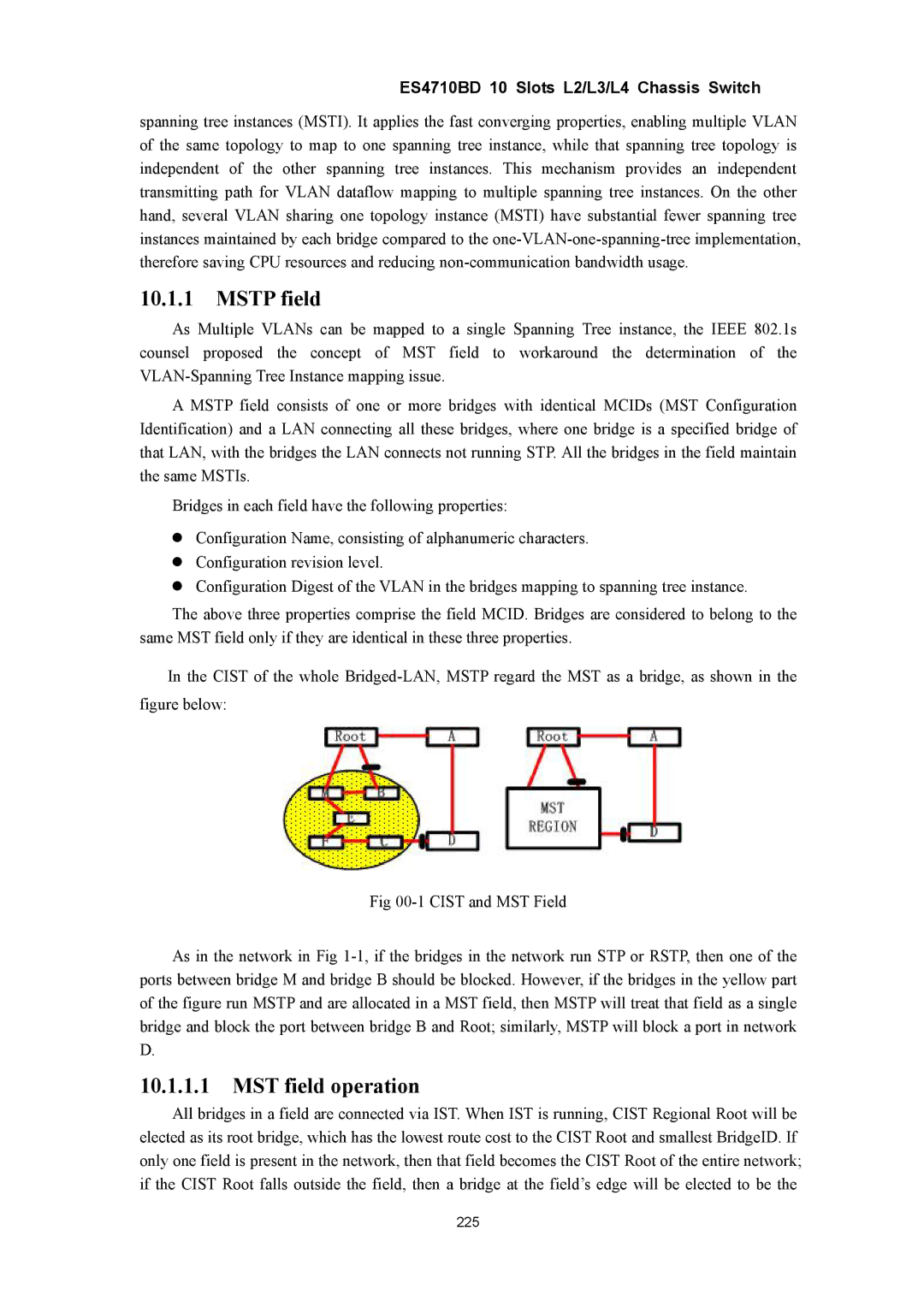
ES4710BD 10 Slots L2/L3/L4 Chassis Switch
spanning tree instances (MSTI). It applies the fast converging properties, enabling multiple VLAN of the same topology to map to one spanning tree instance, while that spanning tree topology is independent of the other spanning tree instances. This mechanism provides an independent transmitting path for VLAN dataflow mapping to multiple spanning tree instances. On the other hand, several VLAN sharing one topology instance (MSTI) have substantial fewer spanning tree instances maintained by each bridge compared to the
10.1.1MSTP field
As Multiple VLANs can be mapped to a single Spanning Tree instance, the IEEE 802.1s counsel proposed the concept of MST field to workaround the determination of the
A MSTP field consists of one or more bridges with identical MCIDs (MST Configuration Identification) and a LAN connecting all these bridges, where one bridge is a specified bridge of that LAN, with the bridges the LAN connects not running STP. All the bridges in the field maintain the same MSTIs.
Bridges in each field have the following properties:
zConfiguration Name, consisting of alphanumeric characters.
zConfiguration revision level.
zConfiguration Digest of the VLAN in the bridges mapping to spanning tree instance.
The above three properties comprise the field MCID. Bridges are considered to belong to the same MST field only if they are identical in these three properties.
In the CIST of the whole
Fig
As in the network in Fig
10.1.1.1MST field operation
All bridges in a field are connected via IST. When IST is running, CIST Regional Root will be elected as its root bridge, which has the lowest route cost to the CIST Root and smallest BridgeID. If only one field is present in the network, then that field becomes the CIST Root of the entire network; if the CIST Root falls outside the field, then a bridge at the field’s edge will be elected to be the
225
